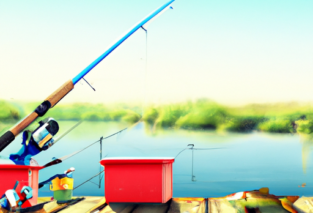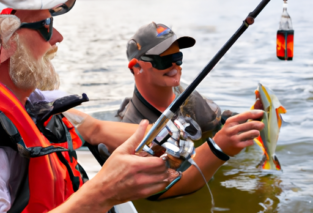Are you a fishing enthusiast looking to expand your knowledge on the various types of fishing nets? Look no further! “A Deep Dive into Different Types of Fishing Nets” is the ultimate guide that will take you on a journey through the wide range of nets available for your angling adventures. From cast nets to gill nets, this comprehensive article will provide you with valuable insights and help you make informed decisions when it comes to choosing the perfect fishing net for your needs. Get ready to enhance your fishing experience as you explore the world of fishing nets like never before!
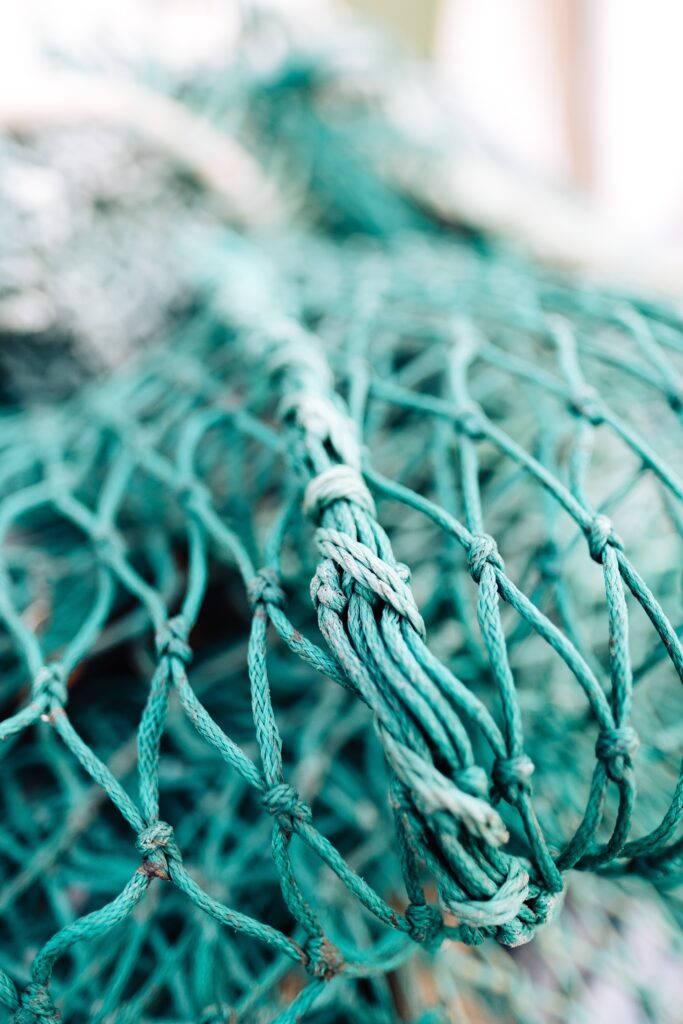
Landing Nets
Scoop Net
A scoop net is a type of landing net that is commonly used in fishing. It consists of a lightweight frame with a mesh net attached to it. The scoop net is designed to be easily maneuverable and can be used to catch fish that are close to the surface of the water. It is particularly useful for catching smaller fish, as the small mesh size prevents them from escaping. Scoop nets are often used by anglers who practice catch and release, as they allow for a quick and easy retrieval of the fish without causing harm.
Rubber Net
The rubber net is another type of landing net that is widely used by anglers. It features a mesh net made of rubber material, which has several advantages over traditional nylon nets. The rubber material is less abrasive and reduces the risk of damaging the fish’s delicate scales or fins. Additionally, rubber nets are less likely to tangle with hooks and other fishing gear. The non-absorbent nature of the rubber net also makes it easier to handle, as it does not retain water and become heavy. Overall, the rubber net is a popular choice among anglers who prioritize the safety and well-being of the fish they catch.
Knotless Net
A knotless net is a landing net that is specially designed to prevent fish from getting entangled in knots and mesh openings. Traditional landing nets often have knots or ties at the intersections of the mesh, which can cause harm to the fish’s delicate skin and fins. Knotless nets, on the other hand, are made with a special knotless design that eliminates these potential hazards. The smooth surface of the knotless net reduces the stress and injuries that fish may incur during the landing process.
Collapsible Net
Collapsible nets are a convenient option for anglers who are often on the go. These nets are designed to be compact and easily collapsible, making them highly portable and space-saving. When not in use, collapsible nets can be folded down to a fraction of their extended size, making them easy to transport and store. This feature is especially beneficial for anglers who engage in travel or backpacking fishing trips, where space and weight are significant considerations. Despite their collapsible nature, these nets are sturdy and durable, ensuring reliable performance when landing fish.
Cast Nets
Circular Cast Net
The circular cast net is a widely used tool for catching baitfish in both freshwater and saltwater environments. It features a circular shape with weighted edges and a central mesh panel. To use a circular cast net, the angler simply throws the net by holding the center and allowing the weights to propel the net outward. The net then sinks to the bottom, trapping fish within its circumference. Circular cast nets are particularly effective for catching fish in shallow water or near the surface, making them a favored choice for anglers looking to secure live bait quickly and efficiently.
Square Cast Net
Similar to the circular cast net, the square cast net is another popular choice among anglers for catching live baitfish. As the name suggests, this type of cast net has a square shape, with weighted corners and a central mesh panel. The square design allows the net to spread out evenly when thrown, increasing the chances of trapping fish. Square cast nets are particularly effective in areas with strong currents or when targeting larger baitfish species. They are commonly used by anglers who engage in saltwater fishing, especially for activities such as baiting lobster traps or catching bait for offshore fishing.
Boat Cast Net
Boat cast nets are specifically designed for use from a boat. These nets are typically larger and heavier compared to other types of cast nets, allowing for longer and more accurate throws when fishing from a boat. The increased size and weight of the net enable anglers to cover a wider area and reach fish that may be further away from the boat. Boat cast nets are commonly used in commercial fishing, where the efficiency and productivity of net casting are essential. They are a valuable tool for anglers who rely on large catches and require a net capable of withstanding heavy use.
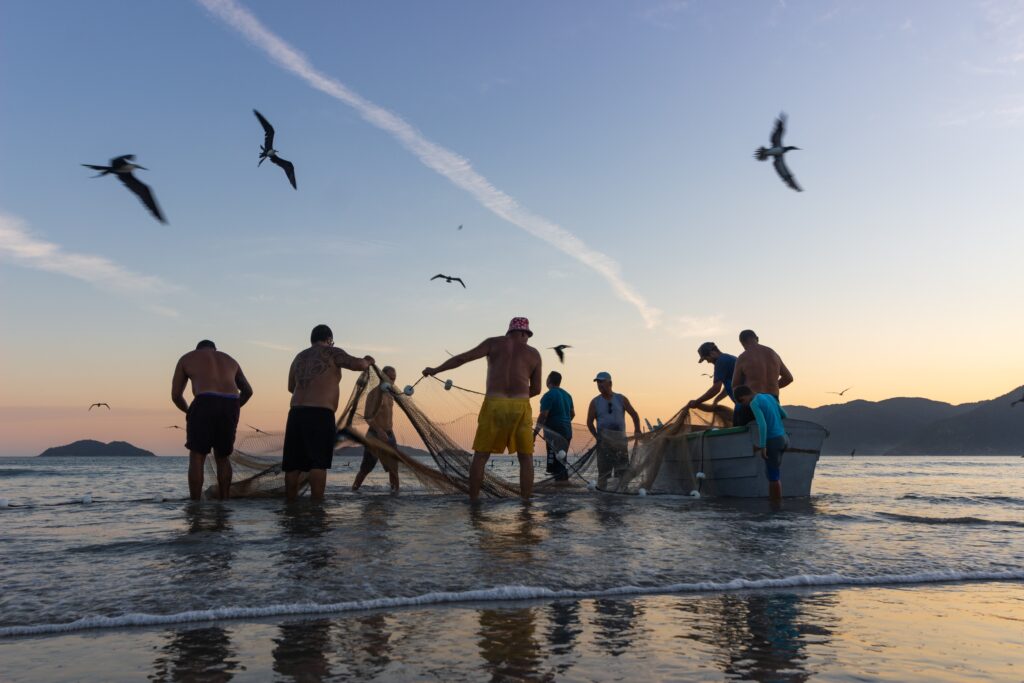
Gill Nets
Gill Nets for Commercial Fishing
Gill nets are commonly used in commercial fishing operations due to their efficiency in catching a wide range of fish species. These nets comprise a series of vertical panels with mesh openings that allow fish to pass their heads through but get caught behind their gills. Gill nets can be set either on the surface or suspended at various depths, depending on the target fish species and desired catch. This fishing method is highly regulated to prevent overfishing and ensure sustainability. Commercial gill nets are subject to strict regulations regarding mesh size, net length, and deployment restrictions to minimize bycatch and protect fish populations.
Drift Nets
Drift nets are a type of gill net that is primarily used in open water environments. These nets are typically deployed by attaching them to buoys or floats, allowing them to drift with the currents and capture fish. Drift nets are often set at significant depths to target specific fish species found in the water column. However, the use of large-scale drift nets has raised environmental concerns due to their potential impact on non-target species, including marine mammals, sea turtles, and seabirds. As a result, many countries have instituted strict regulations or outright bans on the use of drift nets to mitigate these ecological risks.
Set Nets
Set nets are gill nets that are fixed or anchored in place, usually along the bottom or in the water column. These nets are commonly used to target specific fish species that inhabit a particular area. Set nets work by allowing fish to swim into the net, where they become entangled. The nets are typically left in place for a predetermined amount of time, allowing fish to accumulate in the net and be harvested later. Set nets can be deployed in various environments, including rivers, lakes, and coastal areas. However, their use is subject to regulations to prevent overfishing and protect non-target species.
Seine Nets
Beach Seine Nets
Beach seine nets are a type of net used in shallow, nearshore environments, such as beaches and estuaries. These nets consist of a long, rectangular mesh panel supported by poles or floats on either end. Beach seine nets are typically deployed by a team of individuals who walk along the shoreline, drawing the net through the water in a semicircular or horseshoe motion. As the net is pulled ashore, fish and other aquatic organisms are trapped within its sweep. Beach seine nets are commonly used for scientific research, educational purposes, and small-scale commercial fishing in coastal communities.
Purse Seine Nets
Purse seine nets are widely used in commercial fishing, particularly for catching schools of pelagic fish such as tuna and sardines. These nets are typically large and capable of surrounding an entire school of fish. Purse seine nets consist of a large central net panel with a drawstring at the bottom. Once the net is deployed around the fish, the drawstring is tightened, forming a purse-like enclosure that prevents the fish from escaping. Purse seine nets are often deployed from fishing vessels and are highly efficient for catching large quantities of fish in a single operation.
Danish Seine Nets
Danish seine nets, also known as anchor seine nets, are commonly used in European fisheries, particularly in northern Europe. These nets are designed to be deployed from a fishing vessel and consist of a large, rectangular net panel equipped with heavy weights and floats. The net is towed by the vessel, with the weights causing it to sink to the seabed. As the net is pulled along the seabed, fish are herded into the net by the action of the vessel. Danish seine nets are highly effective for catching demersal fish species that reside near the bottom, such as flatfish and cod.

Trawl Nets
Bottom Trawl Nets
Bottom trawl nets are a type of fishing net commonly used in commercial fishing to target fish species that reside near the ocean floor. These nets consist of a long, wide mesh panel with a large opening at the front, known as the mouth, and a tapered tail end. Bottom trawl nets are dragged along the seabed by a trawler vessel, with the mouth of the net open to capture fish and other organisms. To prevent the net from getting caught on rocky or uneven terrain, metal beams called trawl doors are attached to the sides of the net to maintain its shape and provide stability.
Midwater Trawl Nets
Midwater trawl nets are used to target fish species that occupy the water column, rather than the ocean floor. These nets are typically larger and have a more elongated shape compared to bottom trawl nets. Midwater trawl nets are designed to capture fish that swim at various depths, such as pelagic species like herring and mackerel. The nets are equipped with floats and weights to ensure proper alignment and control in the water column. Midwater trawling is a widely practiced method in both commercial and research fisheries, as it allows for the efficient capture of fish without impacting the seafloor habitat.
Pelagic Trawl Nets
Pelagic trawl nets are specifically designed to target fish species that inhabit the open ocean, away from the coastline or seabed. These nets are typically large, capable of covering extensive areas, and are often used in commercial fishing operations targeting schools of pelagic fish. Pelagic trawl nets have a tapered shape with a wide opening, allowing the net to be towed by a vessel while capturing fish within the net. The nets are deployed in areas known to have high fish abundance, such as offshore fishing grounds. Pelagic trawling is a highly efficient method for maximizing catch volumes and is commonly used in the commercial fishing industry.
Dragnet and Surround Nets
Dragnet
Dragnets, also known as drag nets, are a type of fishing net that is used by dragging along the seafloor or water surface. These nets consist of a long, rectangular mesh panel that is typically equipped with weights at the bottom and floats at the top. Dragnets are deployed by towing them behind a boat, allowing the net to cover a substantial area in search of fish. As the net is dragged, fish and other organisms are caught within the mesh. Dragnets are commonly used in small-scale and artisanal fishing operations, as they are relatively simple and cost-effective to deploy.
Surround Nets
Surround nets, also known as encircling nets, are designed to surround a specific area or school of fish. These nets consist of a series of panels or curtains that form a barrier in the water. Surround nets can be deployed by a single vessel or multiple vessels, depending on the size of the targeted fish population. The nets are then drawn together, effectively closing off the area and trapping the fish inside. This method allows for the efficient capture of fish and can be applied to a variety of environments, including lakes, rivers, and coastal areas.
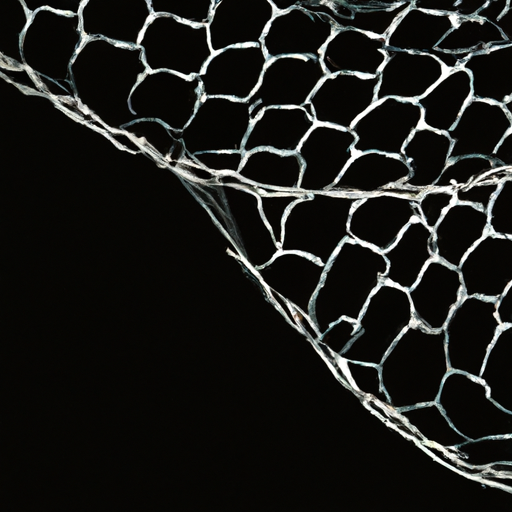
Trammel Nets
Gill Trammel Nets
Gill trammel nets are a type of fishing net that combines elements of both gill nets and trammel nets. These nets consist of three layers of netting: an outer layer with larger mesh openings, a middle layer with smaller mesh openings, and an inner layer similar to that of a traditional gill net. The larger outer mesh helps guide fish into the middle layer, where they become ensnared by the smaller mesh size. Gill trammel nets are commonly used in commercial fishing for targeting species such as cod, halibut, and haddock. They are designed to minimize fish escape and increase catch efficiency.
Mesh Trammel Nets
Mesh trammel nets are another type of trammel net that utilizes three layers of netting. Similar to gill trammel nets, they consist of an outer layer, a middle layer, and an inner layer. However, the mesh trammel net differs in that all three layers have the same mesh size. This design allows the net to capture fish by immobilizing them in the netting. Mesh trammel nets are commonly used in small-scale and artisanal fishing operations, particularly in coastal areas. They are an effective and sustainable method for capturing various fish species without causing significant harm to the individuals caught.
Hoop Nets
Crawfish Traps
Crawfish traps, also known as hoop nets, are widely used in freshwater fishing to catch crawfish or crayfish. These nets consist of a circular or rectangular frame with a mesh netting attached to it. Crawfish traps are typically baited with meat, fish, or other attractive substances to lure the crawfish into the trap. The traps are lowered into the water and left for a period of time, allowing the crawfish to enter the trap through the entrance funnels. Once inside, the crawfish have difficulty finding their way out, making them easy to harvest. Crawfish traps are commonly used by recreational anglers and commercial fisheries.
Lobster Traps
Lobster traps, similar in design to crawfish traps, are specifically designed for capturing lobsters. These traps consist of a rectangular or cylindrical wire frame with multiple entrance funnels and a bait container inside. Lobster traps are baited with fish or other seafood to attract lobsters. The traps are then lowered into the water and secured with floats, allowing them to sink to the seafloor. Lobsters enter the trap through the funnels and make their way to the bait container, where they become trapped. Lobster traps require regular monitoring and harvest by fishermen to ensure a sustainable and controlled lobster fishery.
Crayfish Traps
Crayfish traps are similar in design to both crawfish traps and lobster traps. These traps are used to catch crayfish, also known as freshwater lobsters or crawdads. Crayfish traps typically consist of a cylindrical or rectangular frame with mesh netting and multiple entrance funnels. The traps are baited with fish or other types of food that crayfish find attractive. Once lowered into the water, crayfish enter the trap through the funnels and are unable to escape, allowing for easy harvesting. Crayfish traps are commonly used by recreational anglers who enjoy catching and cooking crayfish for personal consumption.
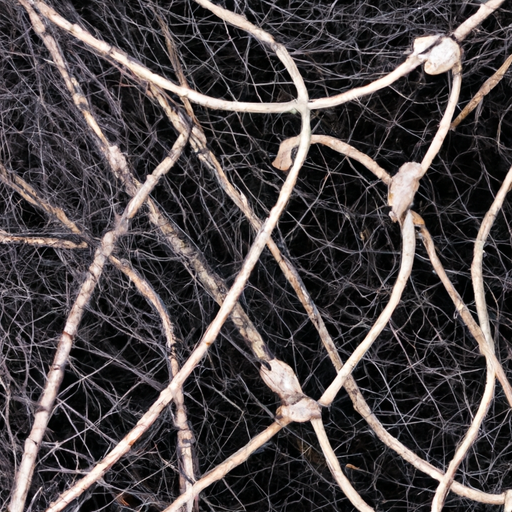
Ghost Nets
Abandoned or Lost Ghost Nets
Ghost nets refer to fishing nets that have been abandoned, lost, or discarded in the ocean. These nets can pose severe threats to marine life as they continue to drift in the water, entangling and trapping fish, marine mammals, sea turtles, and seabirds. Ghost nets are not actively being used by fishermen, but their impact on marine ecosystems remains significant. To address this issue, organizations and initiatives have been established to locate and remove ghost nets from the ocean, mitigating their detrimental effects on marine life. Regular clean-up efforts and stricter regulations on responsible fishing practices are necessary to combat the problem of ghost nets.
Discarded Nets
Discarded nets refer to fishing nets that have been intentionally discarded by fishermen. This may occur due to wear and tear or when the nets are no longer suitable for fishing. Discarded nets can also end up in the ocean as a result of improper disposal or accidental loss. These nets can persist for a long time in the water, continuing to entangle and harm marine life even after they have been discarded. It is crucial for fishermen to properly dispose of old or damaged nets to prevent them from becoming a hazard to marine ecosystems. Awareness and education on responsible fishing practices play a vital role in reducing the prevalence of discarded nets in our oceans.
Multi-panel Nets
Barrier or Fence Nets
Barrier or fence nets are multi-panel nets designed to create a physical barrier in the water. These nets are commonly used in aquaculture, fish farming, and fish hatcheries to control the movement of fish. Barrier nets consist of multiple panels connected by floats and are used to prevent fish from entering or exiting a specific area. These nets are particularly useful for separating different fish species, regulating the flow of water, and protecting fish stocks from predators or disease. Barrier nets can be customized to suit specific needs and are an essential tool in managing fish populations in controlled environments.
Prawn Trawl Nets
Prawn trawl nets are multi-panel nets that are specifically designed for catching prawns or shrimp. These nets typically consist of long, rectangular mesh panels attached to a trawl frame. Prawn trawl nets are towed by a trawler vessel along the seafloor, capturing prawns as the net is dragged. The mesh size of the net is carefully selected to allow smaller prawns to escape, promoting sustainability and minimizing bycatch. Prawn trawling is a widely practiced method in the commercial fishing industry and plays a significant role in providing a valuable seafood resource to consumers worldwide.
Lampara Nets
Lampara nets, also known as purse nets, are multi-panel nets composed of several cylindrical mesh panels attached to one another. These nets are commonly used in coastal areas and estuaries to target a variety of fish species such as anchovies, sardines, and herring. Lampara nets are typically deployed by towing them behind a boat, creating a wall of netting that fish swim into. Once a sufficient amount of fish has been captured, the bottom of the net is drawn closed, effectively trapping the fish inside. Lampara nets are widely used in small-scale commercial fishing operations and provide an efficient method for capturing schooling fish.



